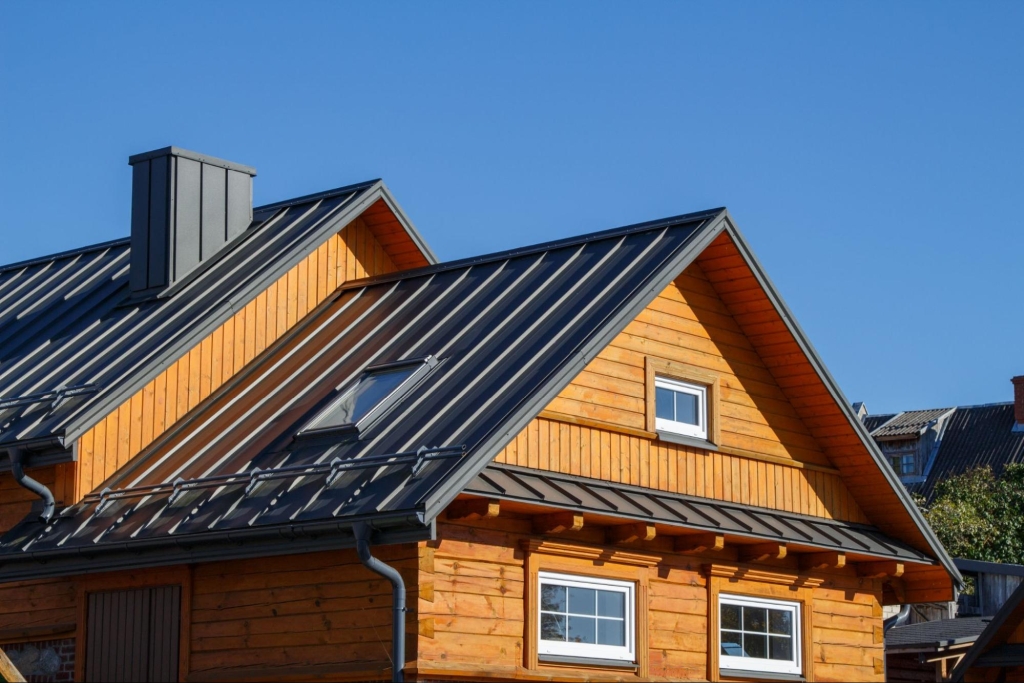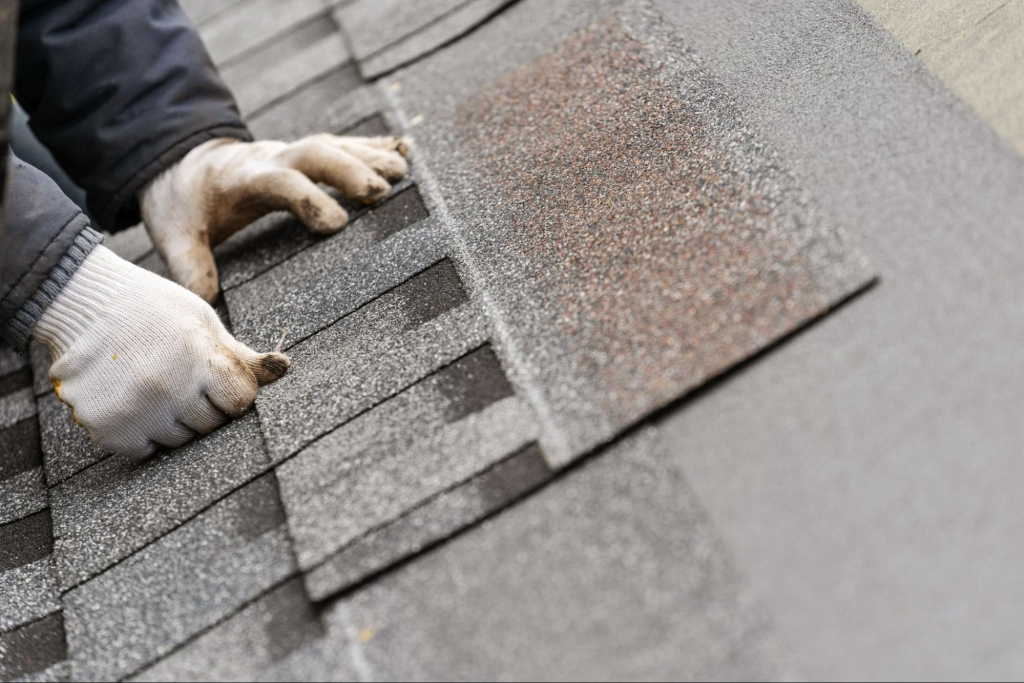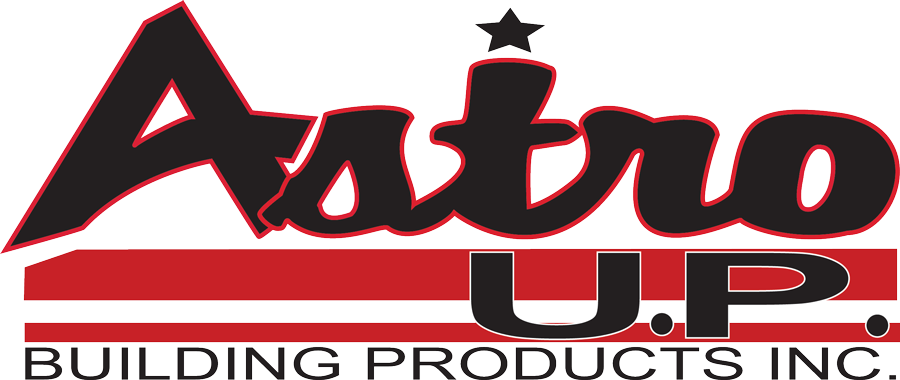The Upper Peninsula is a unique place. It’s why we love it, but it’s also the source of some struggles for Yooper homeowners. Between winter snow, spring ice, summer storms, and fall temperature fluctuations, UP homes can take a real beating. A durable, well installed roof is one of your best defenses against the elements. It’s also a vital part of your home’s curb appeal.
Whether you’re building a new home, upgrading an aging roof, or simply exploring your options, working with an experienced local roofing supply company can make all the difference. In this blog, we’ll tap into our decades of building experience to share everything you need to know about roofing.

Roofing Challenges in the Upper Peninsula
Upper Peninsula weather can be hard on a house. Extreme weather conditions can put tremendous stress on roofing systems. The roofing material you choose needs to have optimal durability and longevity. Your roof will need to withstand:
Snow load: This won’t be news to you, but several UP towns are among the snowiest in the United States! Your roof should be able to hold up against hundreds of inches of snow per year.
Ice dams: These ridges of ice form along the overhangs of a roof. They can be very dangerous for your home, blocking water and melted snow from properly flowing off the roof. Trapped water leaches under your roof shingles to cause leaks, severe water damage, mold growth, other interior damage.
Wind resistance: Gusty storms are common in the UP, especially if you live in a lakeside town like Marquette, Escanaba, or Munising. Roofs, and particularly shingle roofs, need to be able to withstand occasional high winds.
Thermal expansion: While Yoopers enjoy hot summer days at the end of a long winter, our roofs aren’t always happy! If a roof is not properly installed, heat waves can cause roofing materials to expand. In severe cases, this can damage both the appearance and structural integrity of your roof.
Best Roofing Materials for Upper Peninsula Homeowners
Asphalt Shingles
The most commonly used roofing material in America, asphalt shingles can stand up to all kinds of climate conditions. As the most affordable roofing material on the market, they’re a great option for budget-conscious homeowners.
Pros:
- Relatively easy to install and repair
- Durable, with a life expectancy of 15-30 years
- Attractive and popular, with many style options to choose from
Cons:
- More vulnerable to wind uplift, ice, and hail
- Susceptible to moss, lichen, and algae growth
- Can crack/peel, and patches may need to be replaced from time to time

Metal Roofing
The industry standard in longevity and hardiness, metal roofs can last a lifetime if properly maintained. They cost more to purchase and install up-front, but you may save money on maintenance and replacements over time.
Pros:
- Extremely durable, with a life expectancy of 40-70 years
- Reflect sunlight for energy efficiency
- Low maintenance
Cons:
- Higher up-front costs
- Can be noisy during rain, hail, or high wind
- Can expand and contract with temperature fluctuations
Take some time before investing in a new roof to do your research. You can even expand this pros and cons list based on your personal needs. You should think about what kind of roof would look best with your home, consider the challenges your roof might face over the next few decades, and decide how much time and energy you have to inspect and maintain your roof. Finally, think carefully about your budget and how much you can comfortably spend on a roof.

How to Inspect Your Roof
Regardless of what roofing material you use, you should try to inspect your roof at least twice a year. You should also inspect your roof after any major weather event, such as a hailstorm or severe winds. When inspecting your roof, follow these key steps:
- Ground Inspection- Walk around the perimeter of your house and look up at the roof. Use binoculars for a better view. Look for any irregularities in the shape or structure of your roof, like buckling or warping. Look out for shingles that look “curled” or a metal roof that looks “wavy.” If you have shingles, keep an eye out for patches of moss or algae. Piles of leaves or debris can also be dangerous and should be removed right away. Note any missing shingles or any dents in a metal roof.
- Roof Component Inspection- It’s important to inspect your entire roof system. That includes gutters and flashings. Flashings are the thin metal plates that help keep water from leaking into your home. It is found at the joints of the roof, such as where the roof meets the chimney and where the slopes of the roof come to a point. Check your roof flashings for rust, corrosion, warping, and cracking. Check your gutters to make sure that they are not clogged, cracking, sagging, or leaking. You may want to use a ladder for this part of the inspection. Be sure to take proper safety precautions if you do!
- Attic Inspection- Head up to your attic for the final part of your inspection. Check for any signs of water damage, including water stains, mold, sagging, or damp insulation. Also spend some time inspecting the ventilation in your attic, including any intake vents or exhaust fans, to make sure that nothing is blocked. Finally, check for any cracks or holes that could impact the structural integrity of your roof.
When (And How) to Replace a Roof
Some roof problems can be repaired. Others are too big to fix. In those cases, you will have to buy a new roof. There are a few telltale signs that you may need to replace your roof outright:
- Warping or cracks: This may look like curling buckling, or cracked shingles in the case of an asphalt shingle roof. If you have a metal roof, it may look “wavy” or saggy.
- Missing shingles or panels: Patches of missing shingles or missing metal panels signal that your roof is aging and needs to be replaced.
- Widespread leaks or water stains in your attic or ceiling: This indicates serious water leakage, which calls for a roof replacement as soon as possible.
- Widespread moss, algae, or mold growth: While you can clean moss, algae, and mold off your shingle roof, the growth indicates that your roof has some issues with water retention. If you see these signs, you should look into potential issues with your roof, and replace it if the water retention problems are serious.
- Sagging roof deck: If your roof deck (the wood beams under the shingles that hold up the structure of your roof) starts to sag, the structural integrity of your roof is compromised, and you need a roof replacement ASAP. This can happen as a result of excessive weight (such as from snow or ice), improper design, water damage, or age.
- Severe weather damage: Minor weather damage can be repaired, but roofs with serious damage, including holes in your roof or large patches of missing shingles, need to be replaced.
- Frequent repairs: If you find yourself needing frequent roof repairs, your roof is probably nearing the end of its lifespan.
- Age: If your roof is reaching the end of its standard lifespan, it’s probably time to consider a replacement.

Roofing FAQ for Upper Peninsula Homeowners
Q: When is the best time to replace a roof in the Upper Peninsula?
We strongly recommend having your roof replaced in the late spring, summer, or early fall. Like most construction projects, a roof installation is easier to complete in pleasant weather. Higher temperatures also make it easier for the materials to seal properly. Cold temperatures can cause the materials to contract, which can make it harder to accurately measure and install them. However, you can technically have your roof installed or repaired in the winter, especially if it is an emergency.
Q: How long do roofs actually last in snowy climates?
A: Even in a snowy place like the Upper Peninsula, metal roofs can last upwards of 50 years. Asphalt shingles, especially with proper care and maintenance, can last 20-30 years. All roofing materials are designed for durability! Though we encourage you to be aware of threats to your roofing, remember that these materials are highly resilient, even in very snowy areas.
Q: Do UP homeowners really have to worry about algae and mold?
A: Yes. Even in a place without consistent high humidity, shingles are susceptible to mold, fungus and algal growth over time. Keep an eye out for signs of trouble during your biannual roof inspections so that you can tackle the problem before it gets out of control.

Trust Astro UP in Rock, MI for All Your Roofing Supply Needs!
Roofing isn’t the most exciting or glamorous part of owning a home, but it’s very important–especially in the Upper Peninsula. Thankfully, Astro UP in Rock, Michigan knows exactly what sort of challenges Yooper homeowners are facing. We have been the UP’s favorite roofing supply store for over 40 years, and we’re proud to offer a wide range of both asphalt shingle and metal roofing options.
Need help choosing your roofing materials? Have questions about how or when to replace your roof? Just exploring your options? Come visit us in Rock and let our friendly experts help you out. We’re worth the drive!
